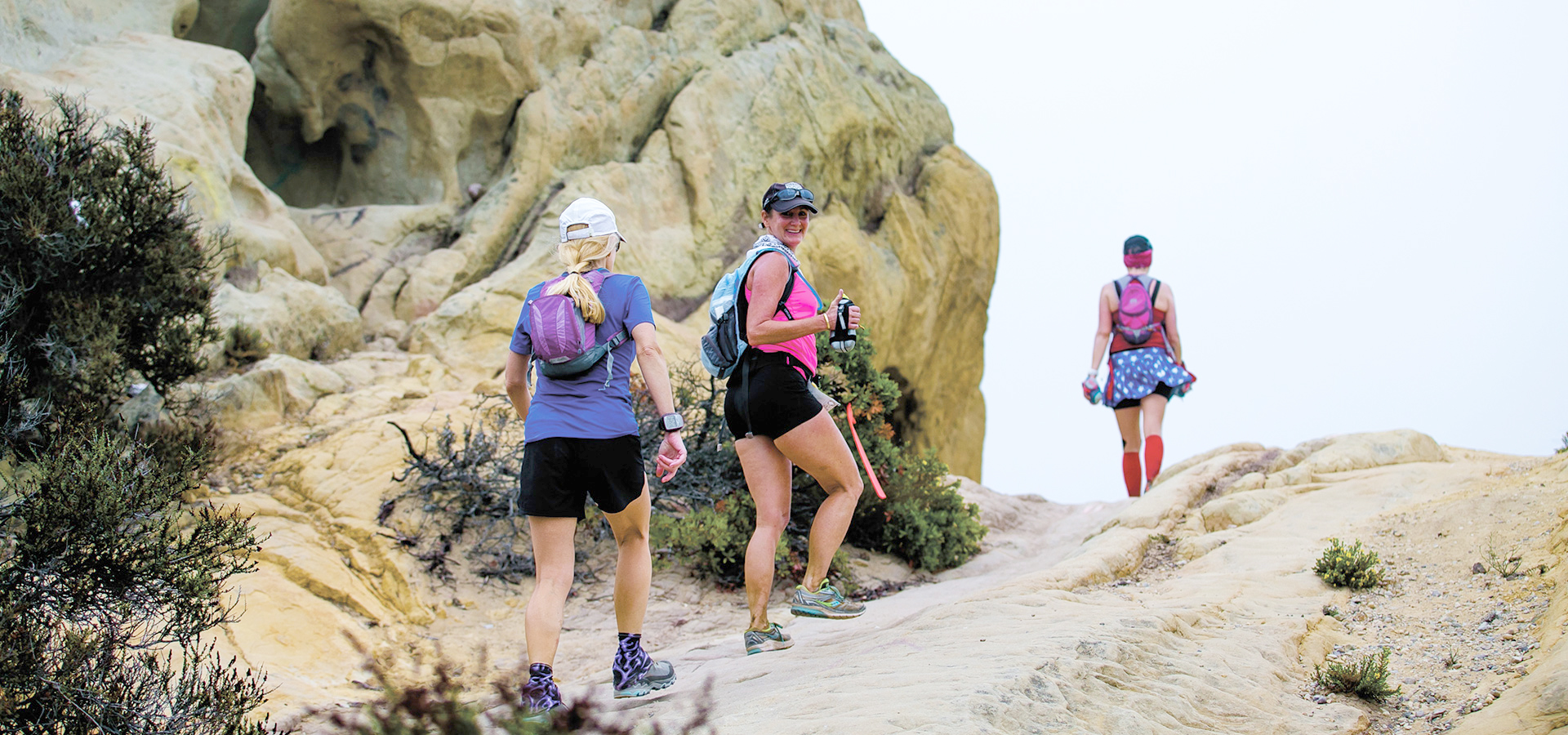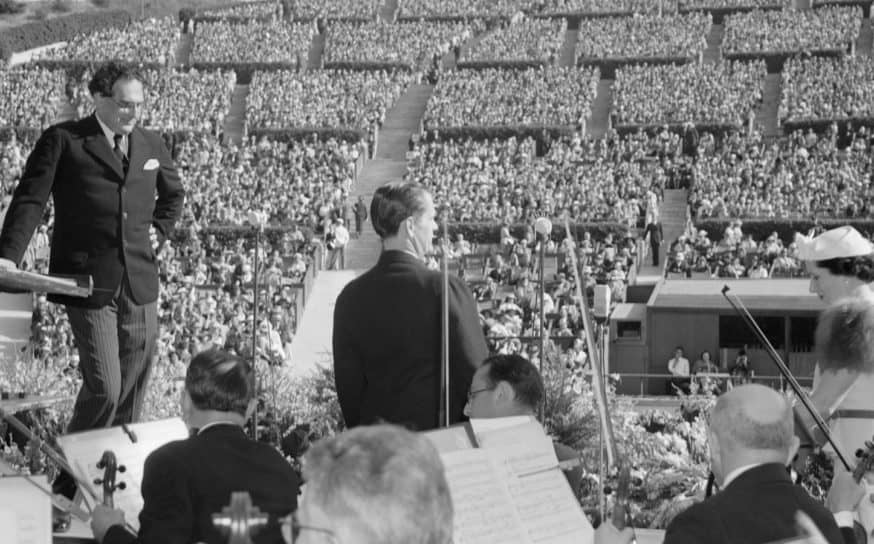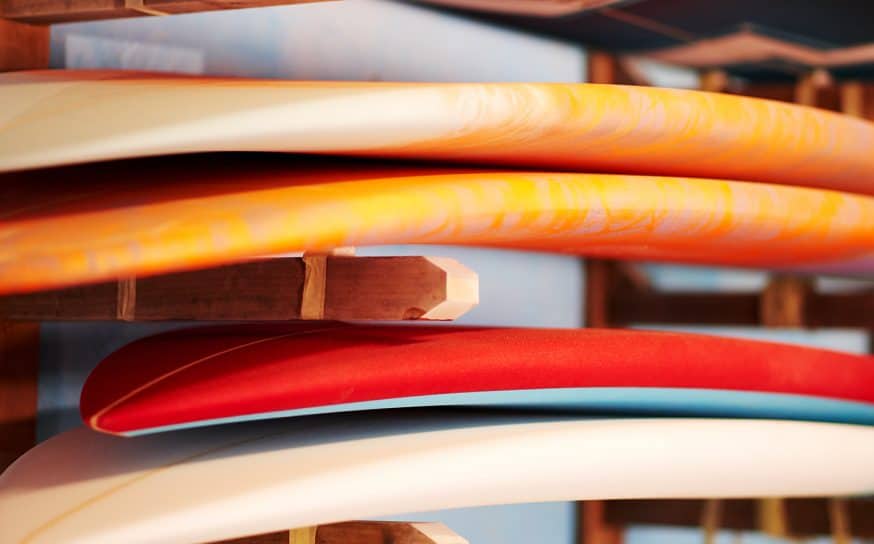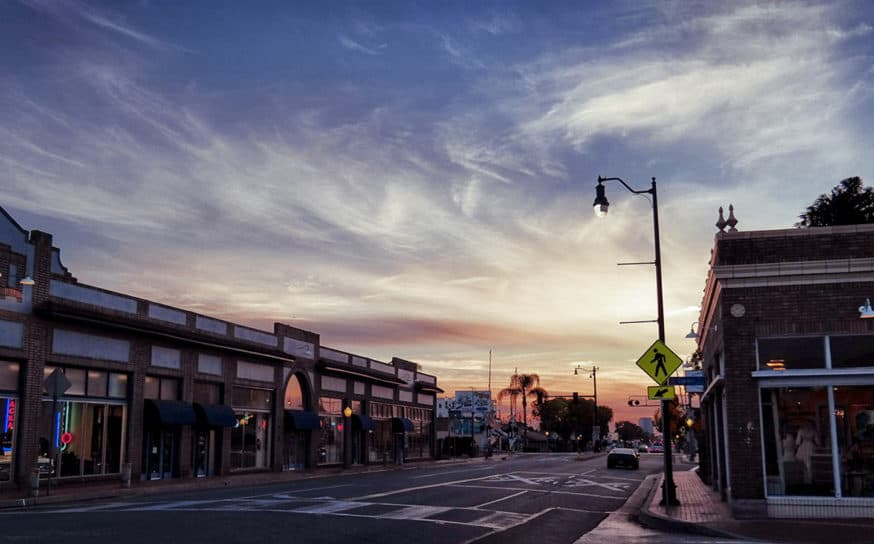Are You Brave Enough for The Bulldog?
A 67-year-old ultra-marathoner and cancer survivor organizes one of the most challenging trail races in the country.
-
CategoryExperiences
-
Written bySteven Stiefel
-
Photographed byUlysses Chan
The Santa Monica Mountains separate coastal Malibu from the southern edge of the San Fernando Valley. While Sandstone Peak, the highest point in this range, reaches only 3,114 feet, these mountains rise quickly from the temperate sea-level coast. Drive 10 minutes into Malibu Canyon, and temperatures in the summer often increase by more than 30 degrees.
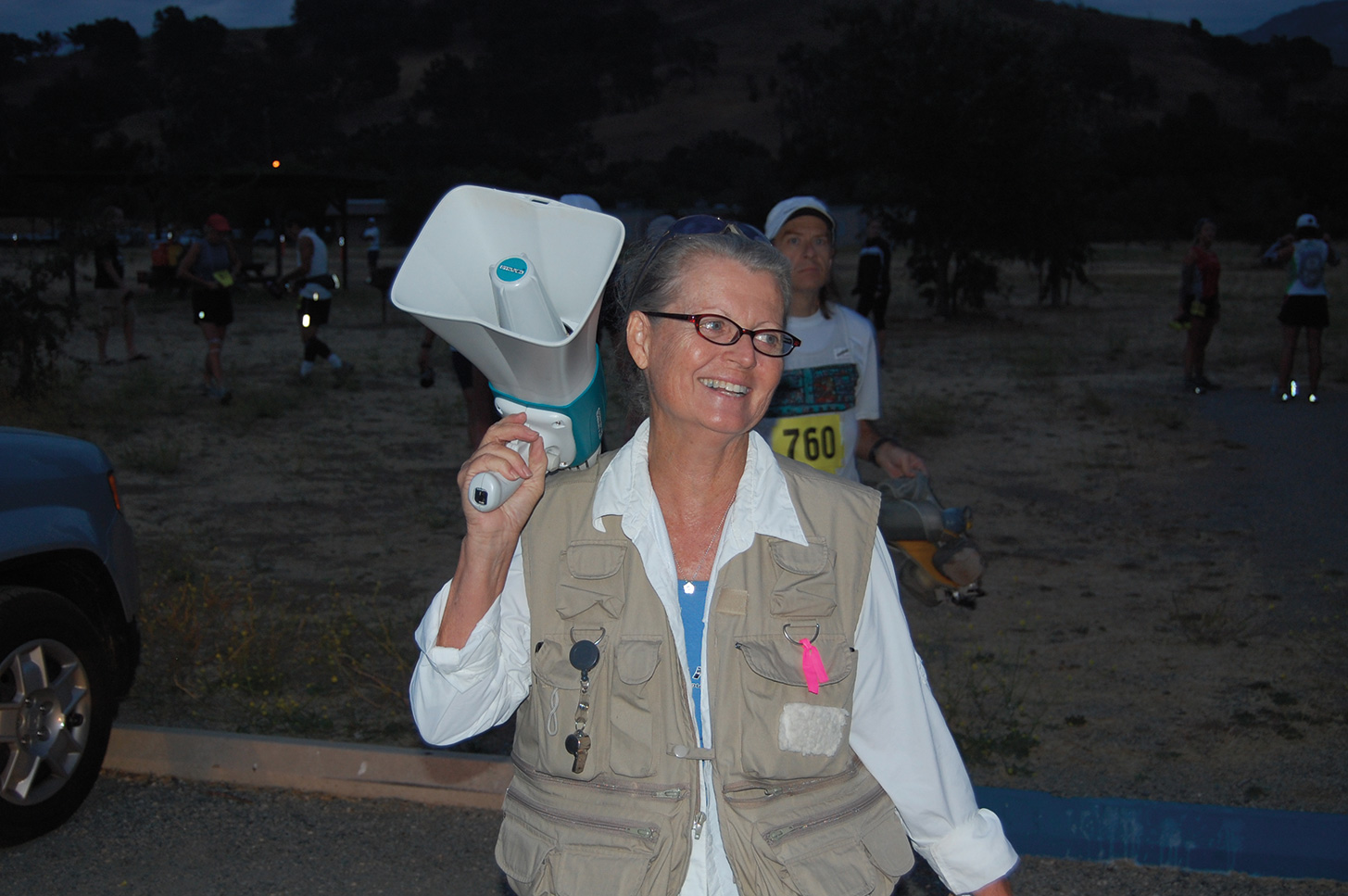
Nancy Shura-Dervin
Nancy Shura-Dervin knows the terrain well. For the past three years, the Calabasas resident has put on The Bulldog, a challenging 50 kilometer (30-plus mile), ultra-marathon race that traverses some of the most extreme and spectacular landscape in America. Along the route, participants rise from the desert canyon to the top of mountains, where they can see the entire LA basin and beyond. It feels like the top of the world.
Shura-Dervin, now 67, has herself completed The Bulldog six times, becoming the race director in 2014. She is an avid marathon enthusiast—finishing 10 50-mile races and three 100-mile races, including the 135-mile Badwater Ultramarathon, perhaps the most challenging run in the country. She has also run “too many marathons and 50K races to count.” She adds that, of these “shorter” races, she is most proud of qualifying and competing in the Boston Marathon four times.
But that’s not how Shura-Dervin’s story as an ultra-marathoner begins. It starts on a couch in her home in 1990, alone at 40, contemplating her life with an impending divorce. She was an out-of-shape smoker. She had never been athletic, but she knew she wanted to improve her life.
ULTRA LADY IS BORN
“The first time I ever ran was when my 23-year marriage ended,” Shura-Dervin says.
Her sister Robin, a triathlete, ran over to her house to check on her. “Put on some shoes,” Robin said. “We’re going for a run.”
Emotionally drained and out of shape, Shura-Dervin only ran about three minutes in her chunky mom sneakers before she reached the corner of her street in Agoura, where she lived at that time. She collapsed onto the curb. “I had to hold my head between my knees,” she says. “I felt so sick.”
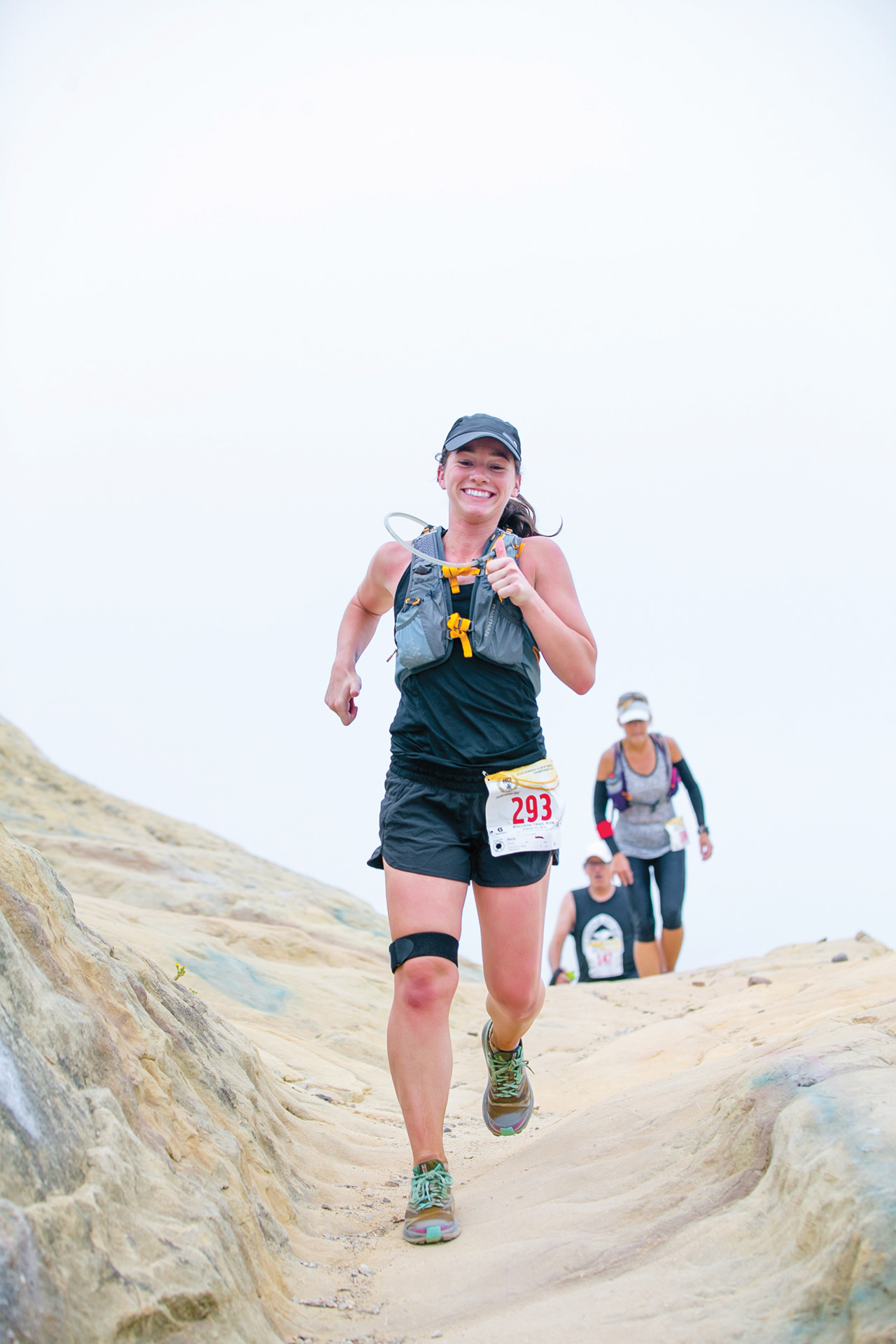
Despite the grueling aspects of this first modest run, Shura-Dervin understood the healing that this experience could offer. And so, she agreed to run with her sister again. Then, alone on weekends, she began hiking the trails near her home, jogging the descents.
Shura-Dervin took to the trails like a champion. Her first long competitive run was the Los Angeles Marathon in March 1991, only nine months after her first failed run with her sister. But on that day of the LA Marathon, Shura-Dervin had the flu. “It was pouring rain, and I completed 18 miles before I had to withdraw,” she says. “I had trained too quickly, and my body broke down.”
Then, three months later, Shura-Dervin entered the Shadows of the Giants run in Yosemite. “I went from failing to complete my first marathon to finishing my first 50K in less than a year from my first run,” she says. An ultra-marathoner was born.
In 1992, Shura-Dervin committed to running The Bulldog, a local 50K on challenging mountain desert trails, that begins in Malibu Creek State Park. Back then the event was owned and organized by Ingrid Shattuck. “It was a challenge to train for such a long trail run at that time, because it was a sport that attracted more men than women,” Shura-Dervin says. “And I couldn’t keep up with the men.”
While the terrain is more challenging than road running, Shura-Dervin explains that trail running is actually easier on the body than pavement. “The ground is more forgiving so there is less pounding. Trails are uneven, up and down and from side to side. The pressure on your legs and feet is more evenly distributed.”
“If I can do it, then anyone can,” Shura-Dervin says. Her voice has a seductive lilt. Suddenly you’re thinking you can achieve the impossible. You can run for distances longer than a marathon. Why can’t you do it if a couch potato, middle-aged, divorced smoker who had never run before was able to complete 100-mile events?
That’s the message Shura-Dervin wants to communicate to others today: She’s run 100-mile races and beyond, and you can too. Try to wrap your brain around that.

THE BULLDOG
This ultramarathon trail race in the Santa Monica Mountains is held annually in August, the desert heat adding to the challenge. “We’re on either side of 100 degrees every year,” Shura-Dervin says. The 50K event goes off at 6:30 a.m. to mitigate this just a bit, at the beginning. The 25K event leaves at 7:30 a.m.
“The 50K has about 8,000 feet of rise,” Shura-Dervin says. Since the race ends in the same place where it begins, that also means it has 8,000 feet of descent. This amount of rise is about the equivalent of running from the base to the top of any of the highest peaks in Colorado—after all, the bases of virtually all of these mountains are located above 5,000 feet.
Those unfamiliar with running will likely mistake downhill as “easy,” but the pounding during descents causes greater stress to the body than ascents. That’s especially true if you’re going to run the second loop to complete the 50K.
As many as 700 participants gather at the starting line of The Bulldog. After the race begins, runners trot along fairly gentle terrain for the first few miles, passing through the M*A*S*H campsite where the popular TV show was filmed in the ‘70s and ‘80s.
Shortly after runners leave the campsite, the terrain grows far more challenging. “You have to run up a steep incline that goes for nearly 4 miles,” says Jennifer Davis, a 37-year-old Ultra Ladies member, who lives in Valley Village. Davis has completed five 100-mile races—four of them crewed by Shura-Dervin.
After you reach the top of Bulldog Motorway, about a 2,300-foot climb, you find panoramic views. “You can see the beach and the Valley, and it’s all worth going up that hill in the heat. It’s my favorite 50K,” Davis says.
At the top of this rise, you reach Corral Canyon and the Ultra Ladies’ aid station near the beginning of the Devil’s Backbone Trail. Despite this harbinger, the Backbone is one of the easier aspects of the run, even though it goes for more than 6 miles. You’ve reached the peak of Los Angeles and, in this moment, you’re a witness to all that lies beneath.
You can also view the outcropping that gives the race its name. “I think that rock looks more like an elephant than a bulldog,” Shura-Dervin says. Even the landscape near Hollywood tries to get cast in roles it may not be quite right for.
After the Backbone, participants begin the descent on such steep and rocky terrain that it’s nearly impossible to run full stride. Before reaching the stoplight at Piuma and Las Virgenes, the trail goes through a creek and then a climb up the Chihuahua, before descending back into Malibu Creek State Park, where the race began.
If you’re an ultra-marathoner, you’ve reached another starting point. The 25K run is one loop; the 50K Bulldog demands that you dig in and repeat.
“The second time you run up that huge rise, you have to get your mind in the right place,” Davis says. At that point you’ve already run about 20 miles, and the desert temperature is increasing.
Many 50K runners take several hours to complete this run, but Matt Adams, an 18-year-old Alaskan, set the course record in 2010. He smashed the previous one by more than 20 minutes, coming in at 3:31:31. “I don’t think that record will be beaten for a very long time,” Shura-Dervin says.
But like so many things in life, The Bulldog isn’t about finish time. It’s about completing a goal. That’s the message Shura-Dervin provides to all of her Ultra Ladies: Pull up your big-girl pants. You’ve done the training. You can finish this race.
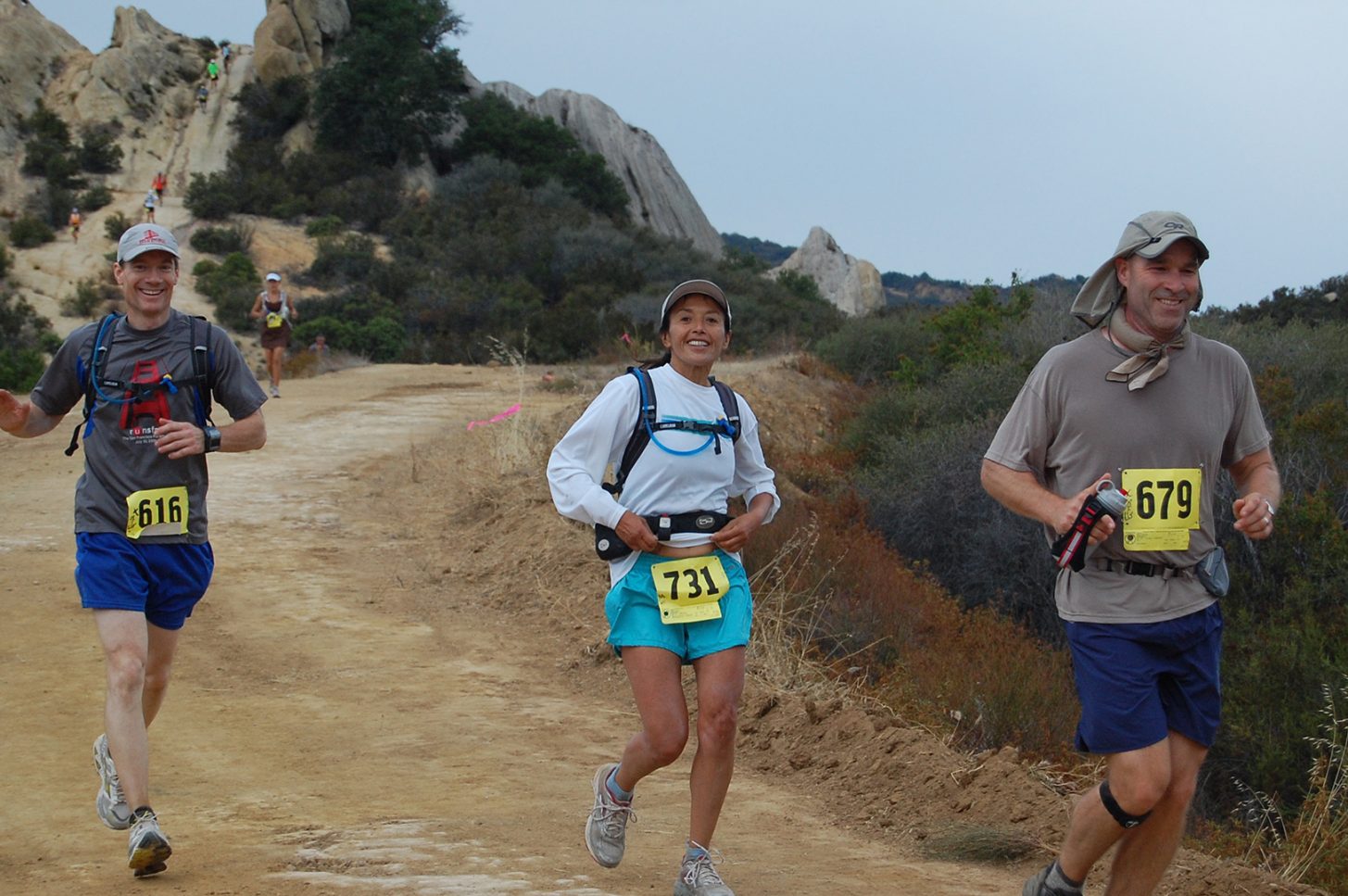
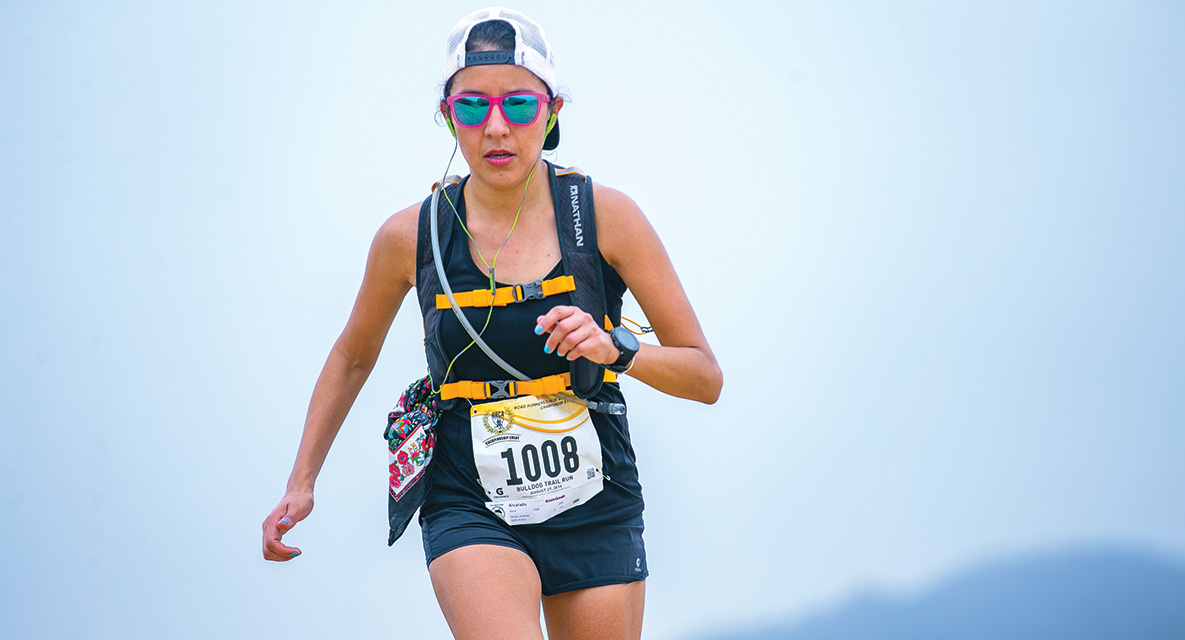
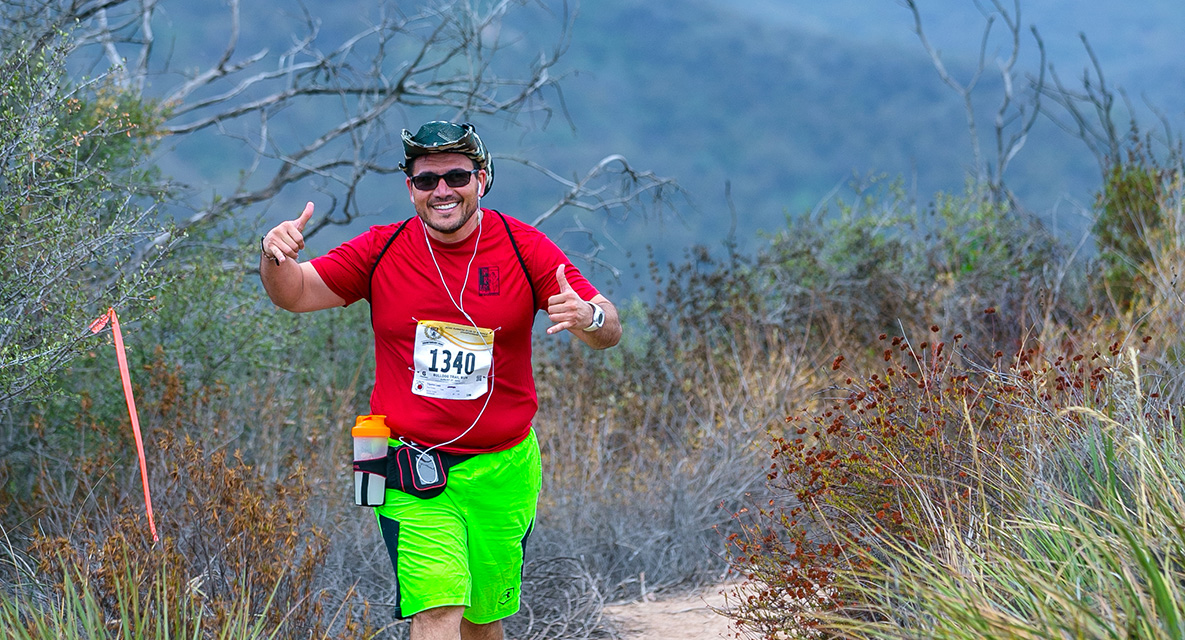
ULTRA LADIES GAINS TRACTION
Shura-Dervin founded Ultra Ladies in 1994. She wanted to support other women and their lofty, extreme running goals. “When I started training for ultramarathons, I had to run with men, and it was a challenge for me to keep up.”
She came across her best recruiting tool at the LA Marathon, greeting women who had completed the 26-mile run. “That first year of Ultra Ladies, I volunteered to train about eight women who had completed the LA Marathon, helping them prepare for The Bulldog,” Shura-Dervin says.
“Now I use this strategy every year to bring more women into Ultra Ladies,” Shura-Dervin adds. She believes that many female runners are looking for a greater challenge.
CeeCee Malone, 36 and an R.N., found Ultra Ladies by Googling. Malone moved from Toronto to Valley Village in 2015, and she was seeking other women to support her goal of completing an ultra-marathon.
“I signed up for my first ultra the year before. But, because I trained on my own, I suffered an overtraining injury,” she says. “I started running about seven years ago, and now I’m trying to complete my first ultra-marathon.”
Malone believes that training with Ultra Ladies and Shura-Dervin will help her achieve this life goal. “Nancy is a great coach,” she says. “She doesn’t assume that all of her Ultra Ladies have the same mindset. She checks in with each of us during our training, and it’s really important for me to have that in a mentor.”
“Nancy knows exactly what to say to you at the most difficult times in your training,” Davis says. “Whether that’s ‘Time to pull up your big-girl pants,’ or, ‘Come on butterfly, it’s time to fly,’ Nancy always knows whether you need nurturing or tough love.”
Ultra Ladies aims to make certain that as many members as possible complete The Bulldog. Training runs often include more than 50 women. One of these is 83-year-old Pat Devita, who calls herself “ultra granny.” She began training with Ultra Ladies in 1995, and she’s still running 50K ultra-marathons.
Practice runs for The Bulldog typically begin at 7 a.m. The distance varies. A run in July went for five hours or about 25 miles, Malone explains. “For this one we started at 6 a.m.” she says. “Because it was so hot that day.” This was the last distance practice run before her first attempt at The Bulldog.
Ultra Ladies also ran a 25K loop of The Bulldog in August, but Malone’s concern isn’t the first loop. It’s the second.
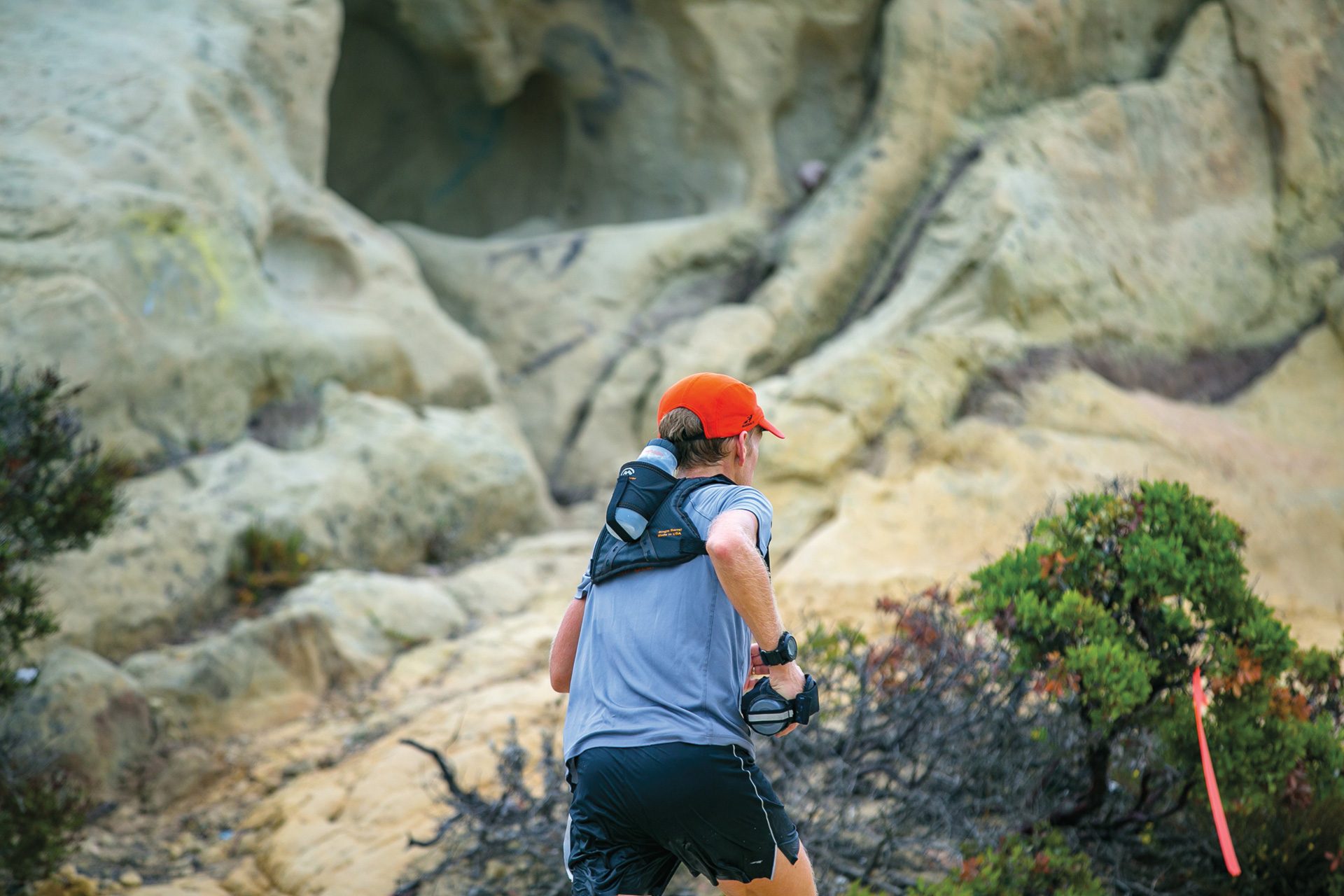
RUN FOR YOUR LIFE
“I met my husband at the top of Corral Canyon in 1991,” Shura-Dervin says.
Fifteen years ago, when Larry Dervin was in his mid-60s, he was winning his age division in the LA Marathon. By 2004, he had back problems and a failed surgery. “He was my crew chief when I completed the Badwater in 2003,” Shura-Dervin says. This 135-mile race begins at the lowest point in the U.S., in Death Valley, and ends at the highest peak in continental America.
With Dervin no longer able to crew her, Shura-Dervin retired from ultra-marathon racing. “I sat down and told him, ‘I’m not going to run without you.’” But she didn’t leave race organizing or lengthy practice runs despite the fact she retired from participating in competitive ultra-marathons.
In January 2016, Shura-Dervin was diagnosed with breast cancer. “It really interfered with my training,” she says, as though this was the most consequential inconvenience of her prognosis. While that prognosis is very good, she developed deep vein thrombosis in her leg that caused blood clots in her lungs. She has since recovered.
“The strengths you need to tap into when you have cancer are the same ones you need to complete a 100-mile run. It’s a life skill that ultra-running has taught me,” Shura-Dervin says.
She believes that the strenuous mental and physical endeavors she has put her body through are those that have helped her survive breast cancer and her other physical maladies. Her doctors have cleared her to run again.
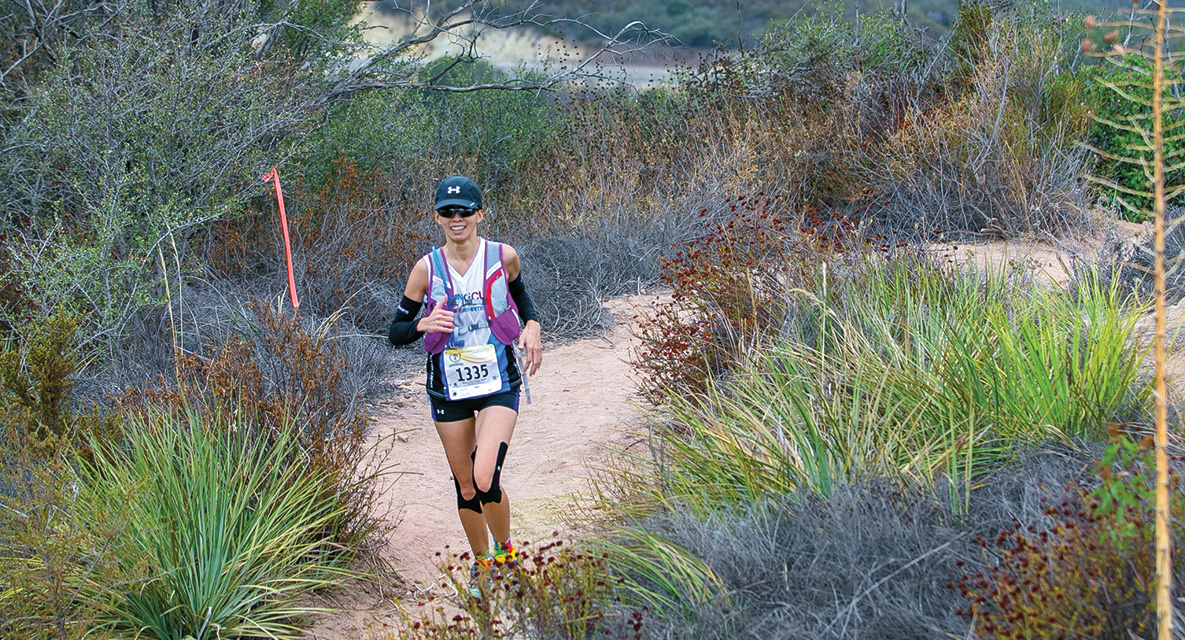
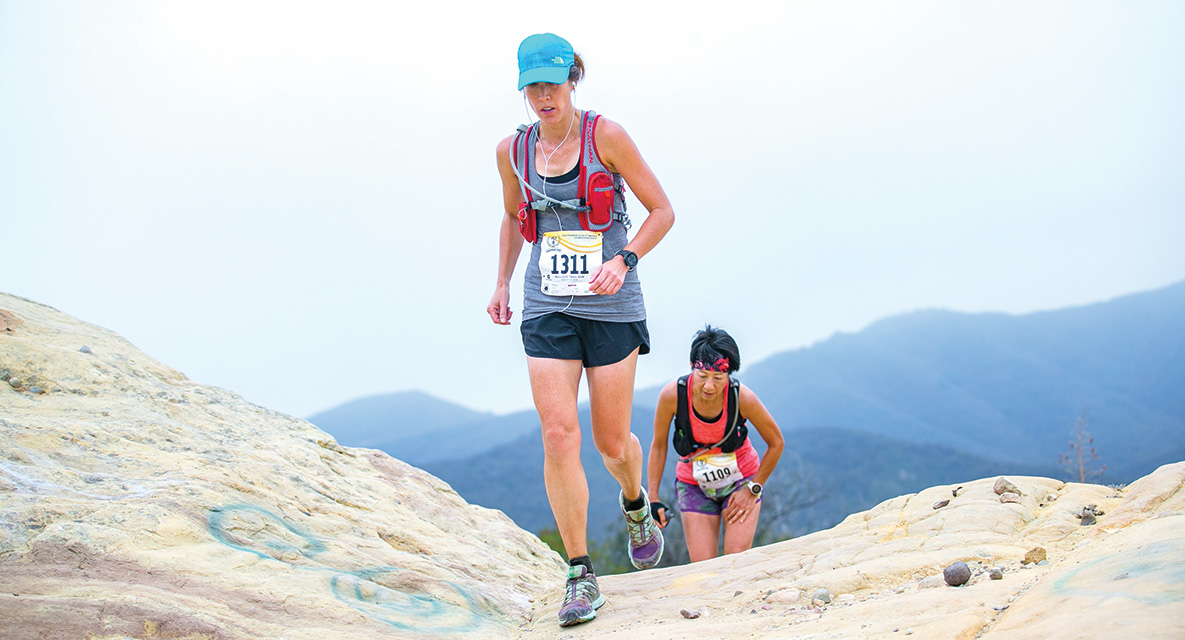
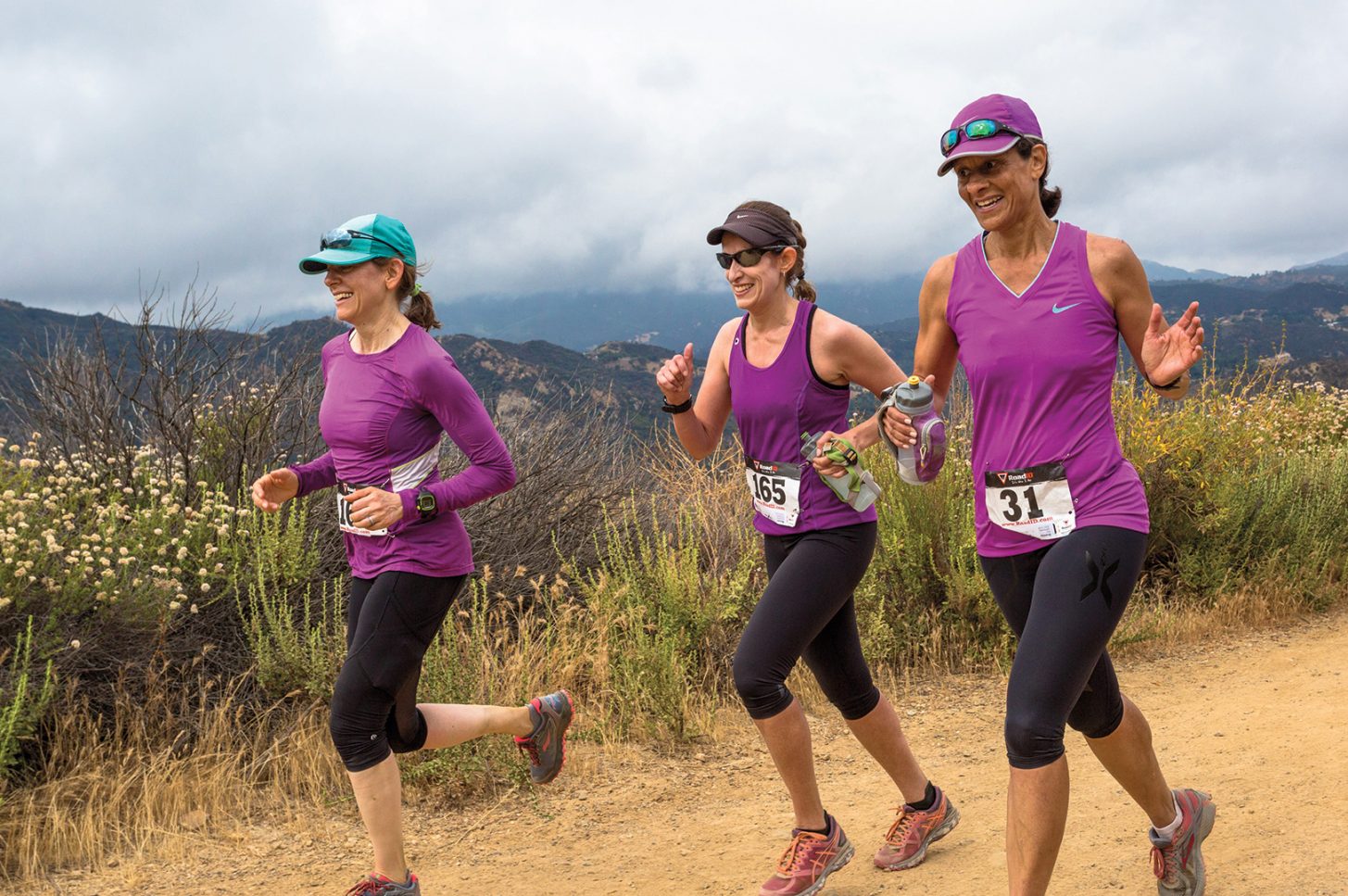
RACE DAY
Each year, race director Shura-Dervin arrives at Malibu Creek State Park at 4 a.m., before The Bulldog begins.
“Larry and I share duties on race day,” she says. He oversees the aid station and supplies at the top of Corral Canyon; she organizes the event at the beginning and end. Today, she says the race is a well-oiled machine. “The key is that we recruit almost 100 volunteers ahead of time to make sure race day goes smoothly.”
During any ultra-marathon, you don’t know what challenges you’ll face until you meet them. “I’ve seen snakes on the trail and in the shade at the side of the road during practice runs,” Malone says.
It’s not a crazy concern. After all, Shura-Dervin was bitten by a rattlesnake on a practice trail run. “Luckily it was a ‘dry’ bite,” which means the snake did not release venom into her bloodstream.
As you run The Bulldog, you’re on your own in the heat and sun, and you have to face these fears. Faster runners have left you in their dust. Slower runners are far behind, and you don’t want to see, feel or hear any of them creep up on you. You want the battle to be between you, and the terrain and desert climate.
“You learn the tricks,” Davis says. “You put ice in your bra at Corral Canyon. You break the race down into very many small, achievable goals.” You look for the next rock, the next patch of shade. ‘The important thing is to keep running … ”
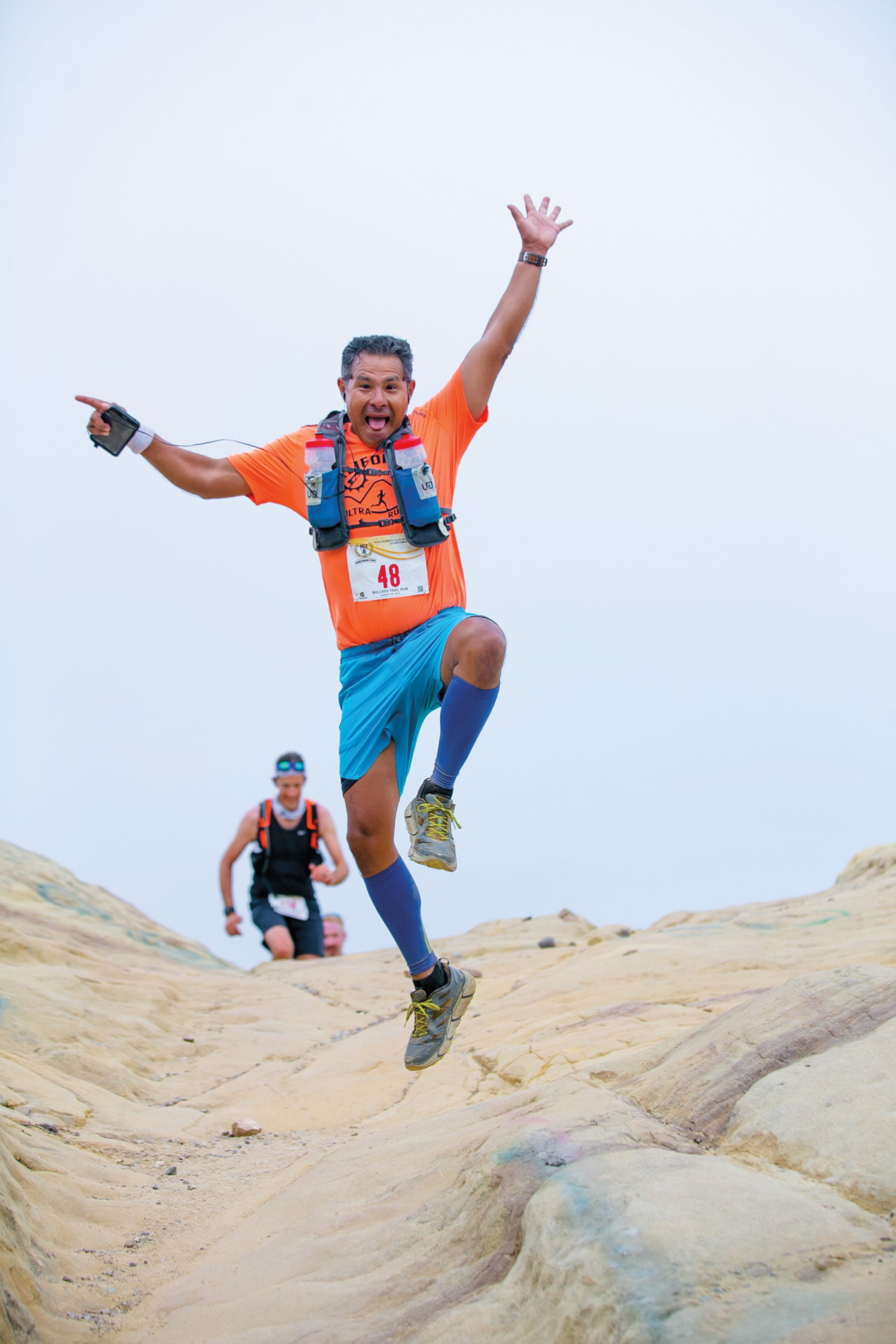
REACH YOUR PEAK
“If I can become a runner, then anyone can,” Shura-Dervin says. “I was the least likely person to ever run a marathon.”
Every Ultra Ladies runner we spoke to echoes a similar sentiment. None of them were running athletes in their youth. They all came to running ultra-marathons in adulthood, some even beyond what many would consider their prime.
Shura-Dervin’s message is clear. You can change your life, no matter your age or previous experience. You can accomplish things you never thought possible. All you need to do is heed the words she says to her Ultra Ladies when they reach her at an aid station at the point of their most difficult practice runs. “Put on your big-girl pants; fly, butterfly, fly.”
For more information on these races go to trailrunevents.com.
Wait Until You See What the LA Phil Has Planned for Their 100th Year
The yearlong celebration welcomes musical superstars from across the globe.
These California Travel Encounters Will Make You Smarter
Get schooled and celebrate local traditions at the same time.
Where to Enjoy the Retro Downtown Charms of Orange County
From Orange to Tustin, these urban centers are worth a visit.
Get the Latest Stories




